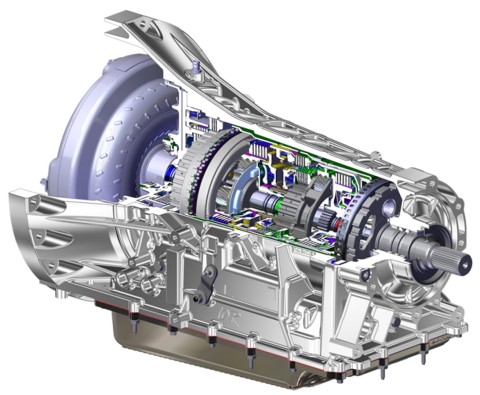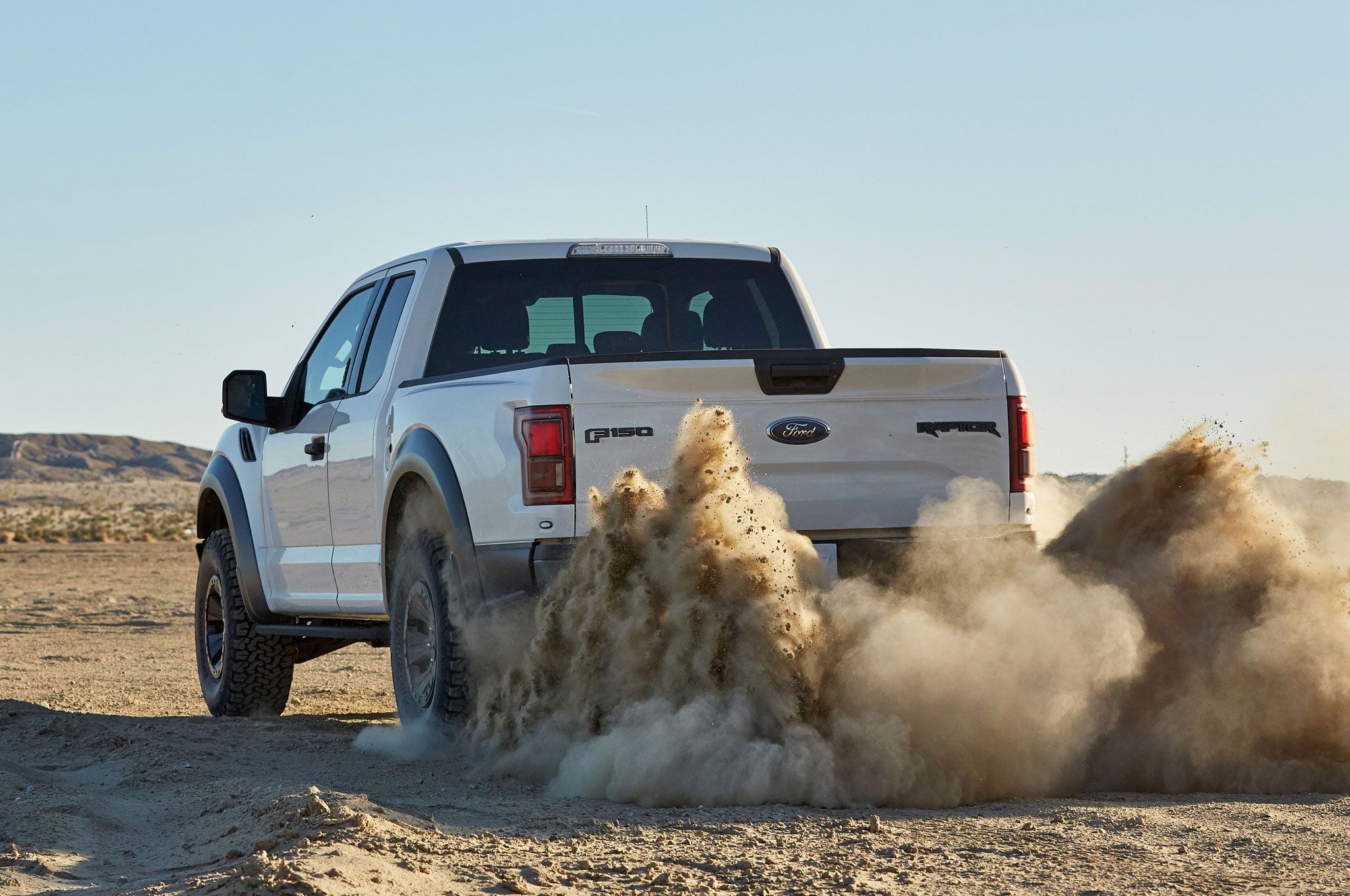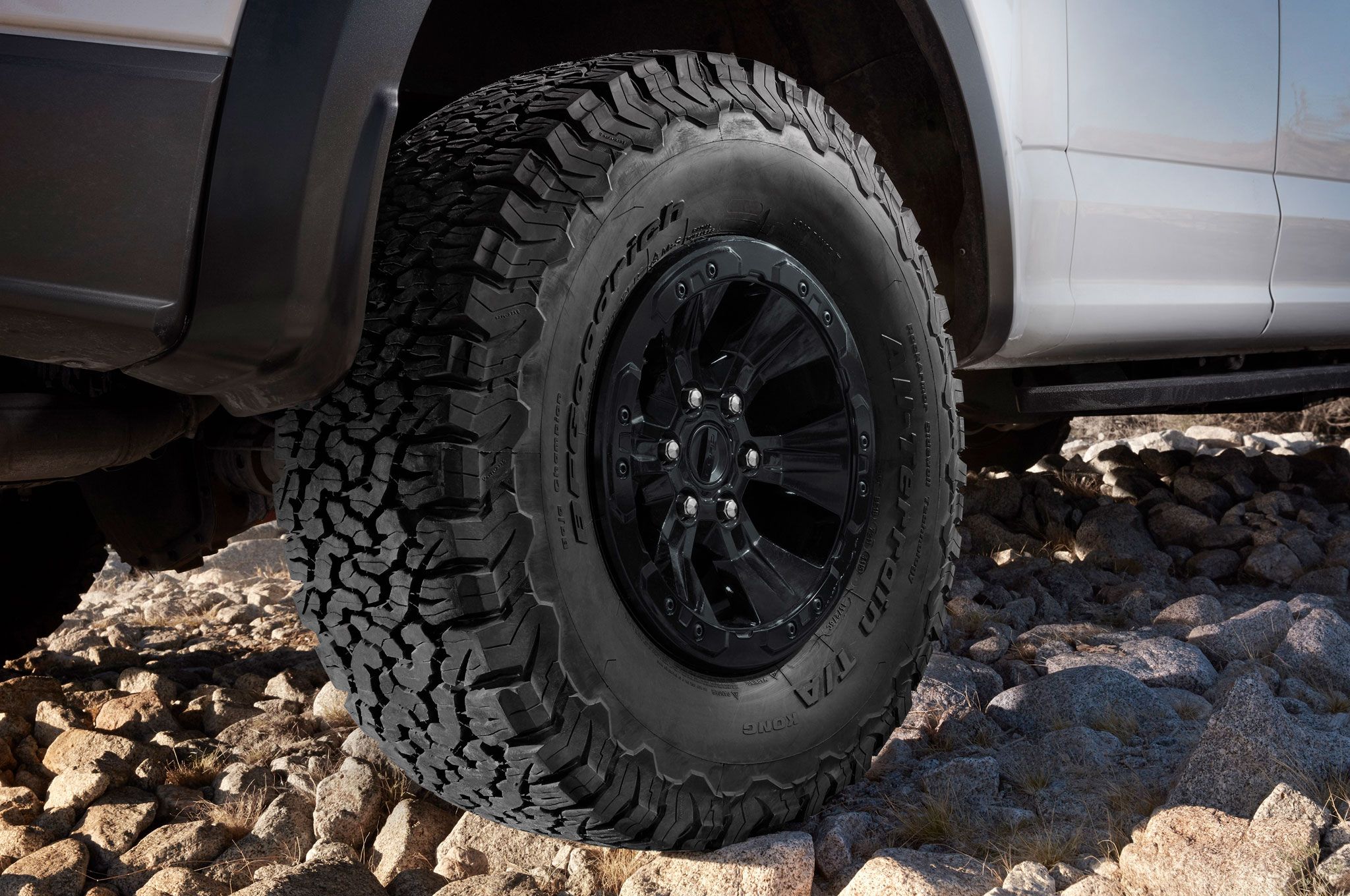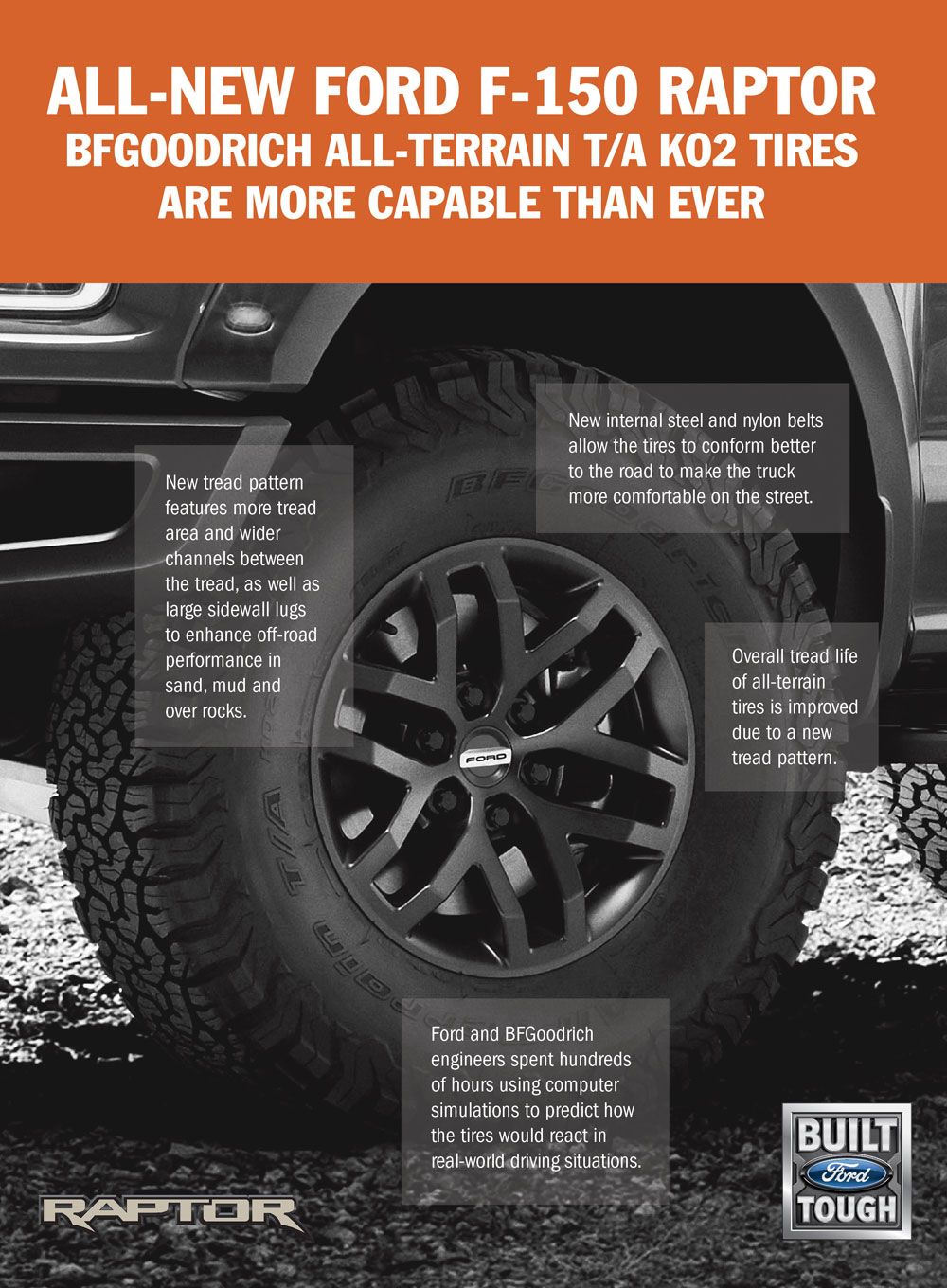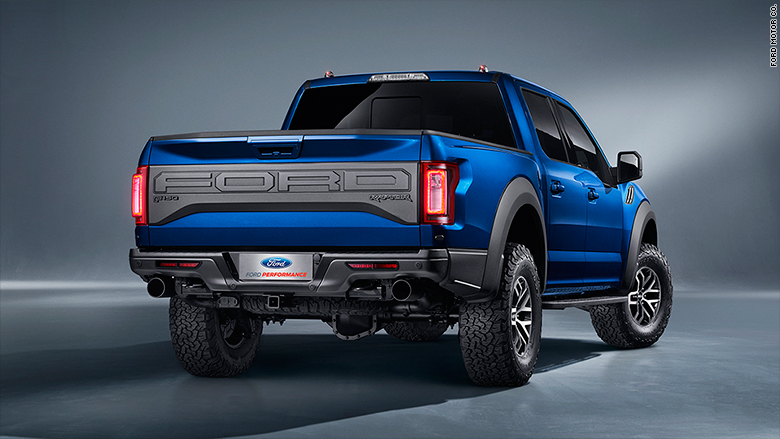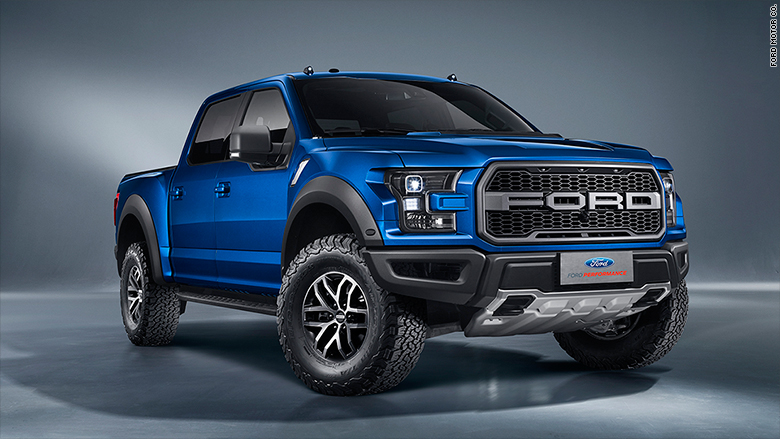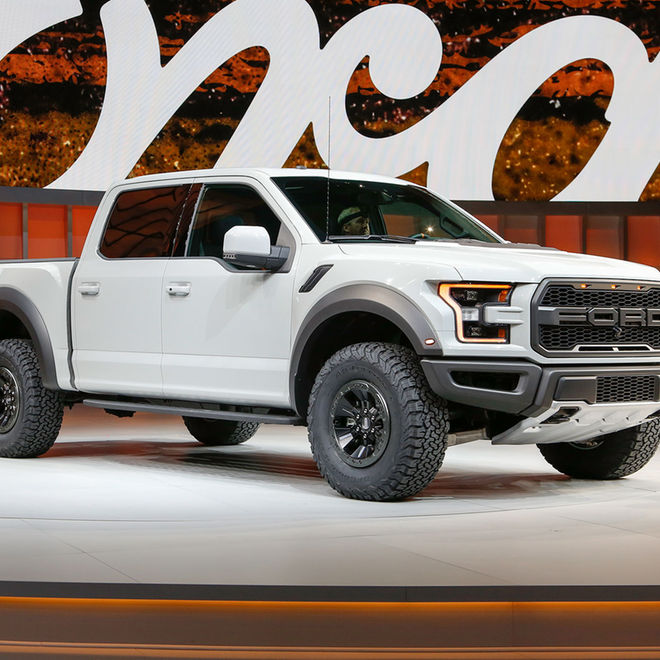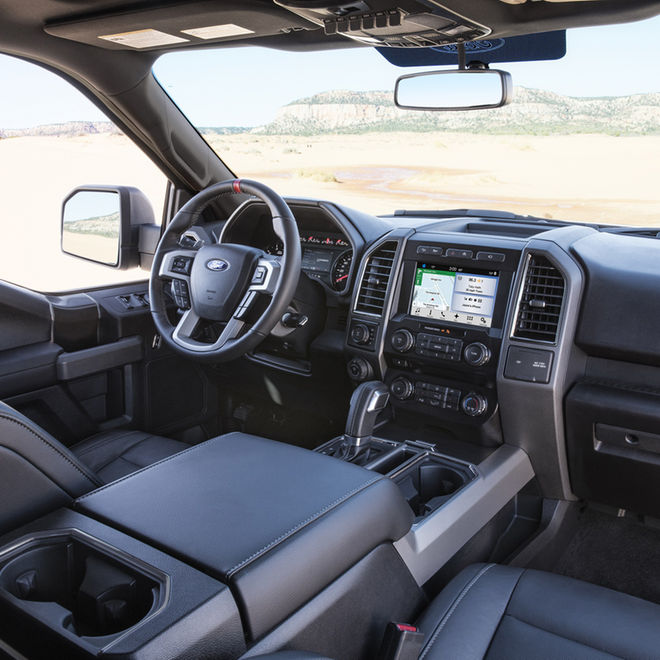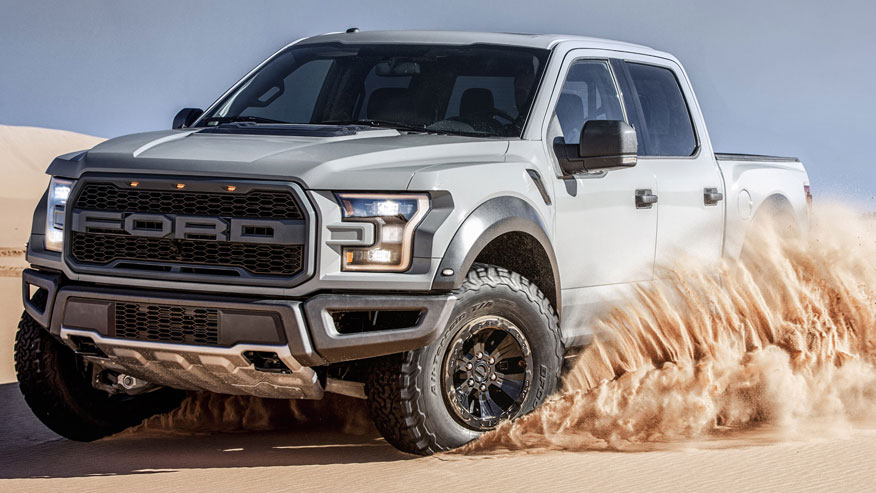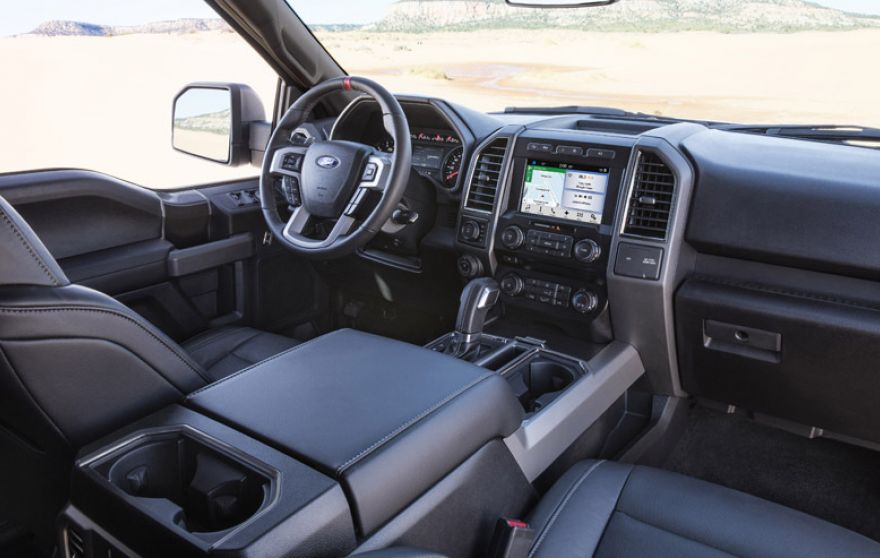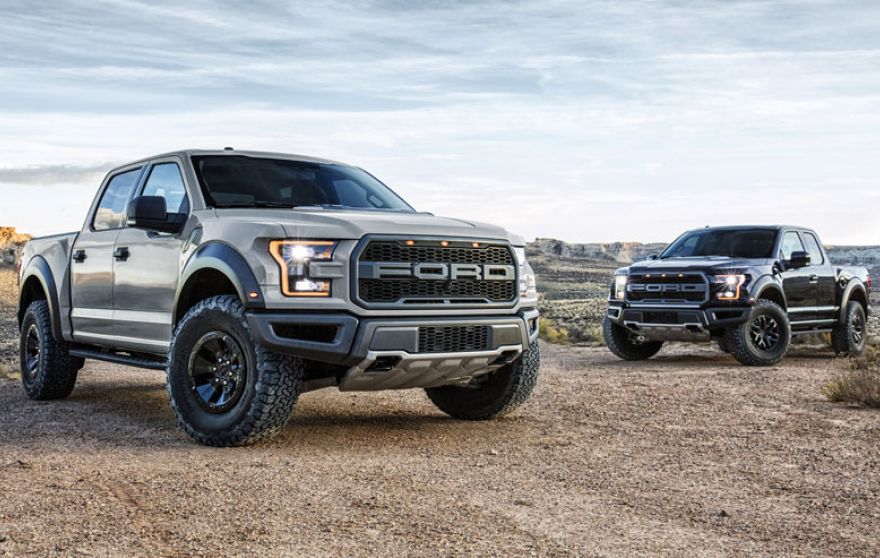Source: Car and Driver
Ford's first F-150 Raptor hit like a meteorite when it made its debut for 2010-sudden, spectacular, and surprising. It was the first true high performance off-road pickup with factory warranty, a proud totem of badassery. Developed by Ford's Special Vehicle Team, it somehow survived both the Baja 1000 desert race and the worst economic faceplate in recent history to become a certified critical and commercial success, even if many Raptor never set a wheel off-road. We predict more of the same now that a new, lighter F-150 platform will underpin Ford's exurban pre-runner.
While many details are still guarded, the second-gen truck will launch in autumn 2016 as a 2017 model under the new Ford Performance banner. So it’s just called the F-150 Raptor now. It’s also more thoroughly engineered as a special vehicle unto itself; Ford has given it a dedicated chassis and powertrain to go with the special bodywork.
The Raptor’s new boxed steel frame is reinforced from the normal F-150’s and will come in two sizes: the sportier 133-inch-wheelbase SuperCab and the roomier 145-inch SuperCrew. Despite the beefier frame, Ford claims that the new truck’s aluminum body (as well as the composite hood and front fenders) helps trim 500 pounds from its predecessor’s curb weight. Considering the last Raptor SuperCab we tested weighed 6100 pounds, we’re strongly in favor of the diet.
No longer is there a big, iron-block V-8 under the hood, so that should save some weight right there. Yes, folks; the 2017 Raptor is EcoBoost only and the first recipient of a second-generation 3.5-liter V-6 with twin turbochargers and direct fuel injection. Ford says the high-powered EcoBoost engines it develops for sports-car racing influenced some of the production V-6’s improvements, including a new aluminum block and updates to the fuel system, cylinder heads, and internals. To further improve airflow, the high-output engine exhales through a true dual-exhaust system with twin outlets notched in the rear bumper.
We’ll miss the roar of the old 6.2-liter V-8, but Ford promises that the Raptor’s new turbo six will be more efficient and soundly trump the V-8’s 411 horsepower and 434 pound-feet of torque. We don’t know yet by how much, but count on loads of torque and at least 450 ponies.
Mated to the Raptor’s engine will be the first application of Ford’s 10-speed automatic transmission and a new four-wheel-drive transfer case, which will work with a terrain-mode system to configure the truck for varying conditions (mud, snow, rocks, etc.). Controlled via steering-wheel buttons and a menu in the cluster, the system will tailor the characteristics of the engine, drivetrain, stability control, and more to help weekend warriors get the most from their Raptors without rolling them down hillsides.
All of this means nothing off-road, however, without a proper suspension. New components are decidedly robust and wider than before, with monstrous aluminum control arms up front, specially tuned springs (coils in front, leafs in back), and 3.0-inch internal-bypass Fox Racing shocks in place of the old 2.5s. Ford is coy on details, saying only that suspension travel is greater than the previous truck’s 11.2 inches in front and 12.1 at the rear, which was already sufficient for 90-mph blasts through the desert.
Part of the previous Raptor’s appeal was that it had relatively decent road manners considering its core mission and giant tires. While the new truck will have similar footwear as before—new 17-inch wheels with 35-inch-tall BFGoodrich All-Terrain T/A KO2s—we’re told to expect a much smoother, more composed ride. Given the refinements we’ve already experienced driving the new F-150, we have no reason to doubt it.
There’s also no doubt that the new Raptor looks the part, all toned and buff in its alloy skin. It’s more than just a slab-sided F-150 with fender flares now; its haunches are much more prominent than the old truck’s. They’re about as wide as before, or roughly as broad as one and a half Fiat 500s, largely to clear the huge tires and beefier suspension.
The Raptor’s proud “FORD” grille and array of marker lights remain, but they’re now framed in a design more finessed than the blocky first-gen truck’s. Small front and rear bumpers improve approach and departure angles, particularly the pinched-up rear end, which lends a true desert-racer look. The giant front skid plate, front fender vents, and optional bed decals carry over, but with evolved designs.
Our first look at a preproduction 2017 Raptor’s interior revealed deeply bolstered sport seats up front with contrasting stitching; some carbon-fiber accents; and a meaty, contoured steering wheel with large paddle shifters. Expect plenty of “Raptor” logos, as well as greater overall comfort and luxury than before, with all of a modern truck’s options and safety gear.
The original Raptor’s successful four-year run made it the highest-volume SVT vehicle ever, with production nearly maxed out. It opened up new markets, including the Middle East and several government agencies. Without sharing volume specifics, Ford says all the previous buyers should be able to upgrade to the new truck, and that there likely will be manufacturing capacity available to appease additional new owners. Pricing info is similarly murky, yet the first F-150 Raptor’s relative accessibility—about 46 grand to start in 2014—was key to its charm. Don’t expect a huge leap in price; we expect base trucks will begin around $50,000, and loaded SuperCrews could reach 60 large.
If so, that will still be a bargain for what you get. The Raptor comes from a hardy bloodline in the F-150. And it’s lighter now, so it can fly even farther.
http://www.caranddriver.com/features/2017-ford-f-150-raptor-in-depth-feature


